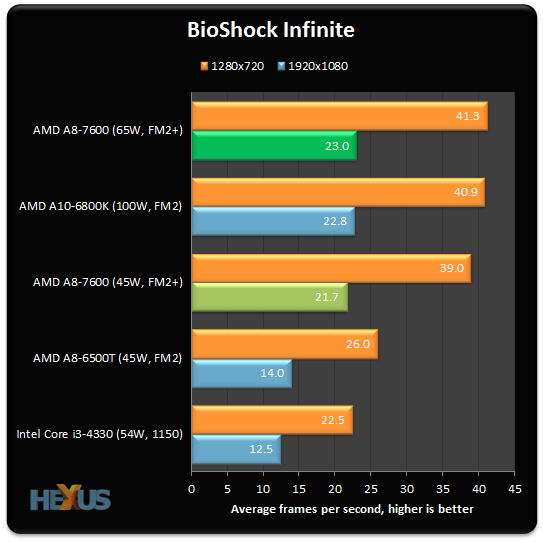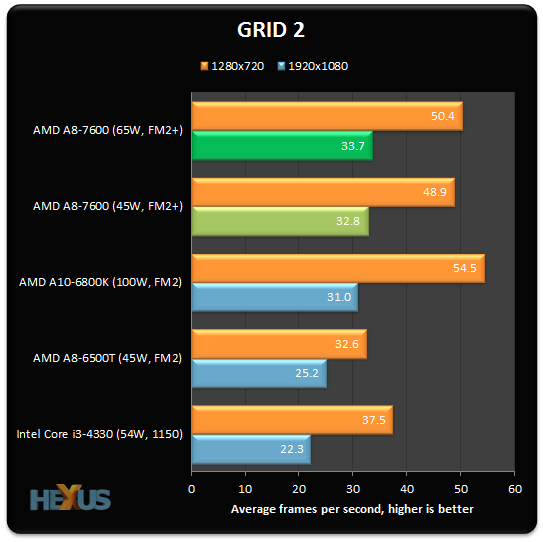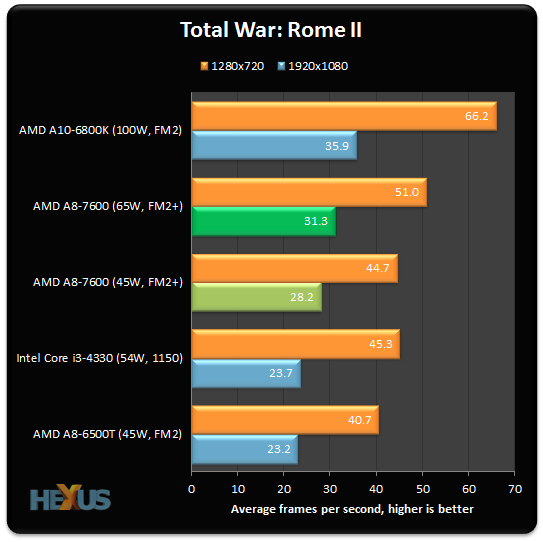Benchmarks: Gaming

The graphically-heavy BioShock Infinite is run at medium-quality settings. Smooth at 720p but becoming a little choppy at the full-HD resolution, AMD's transition to the GCN core pays good dividends; it matches the best graphics from the previous generation.

GRID 2 looks rather nice at high-quality settings, used in the benchmark above. Now known as Radeon R7 and touting 384 shader-cores, one can expect the A10-7850K APU, equipped with 512 shaders, to be noticeably faster. What's more important is the knowledge that the game is nice and playable at 1080p.

Total War: Rome II was specifically chosen for IGP benchmarks because it relies on CPU horsepower as well as GPU might. The beefier core clock of the A10-6800K - which, remember, is about £20 dearer - catapults it into first place.
Intel does better than expected here because the HD 4600 Graphics can take advantage of the Direct Resource Access option that's exclusive to Haswell-based processors: the option enables direct reads and writes to buffers associated with the GPU.
In summary, the cutdown GCN graphics in the A8-7600 are, on average, as potent as the fastest available from the last-generation A10-6800K.









